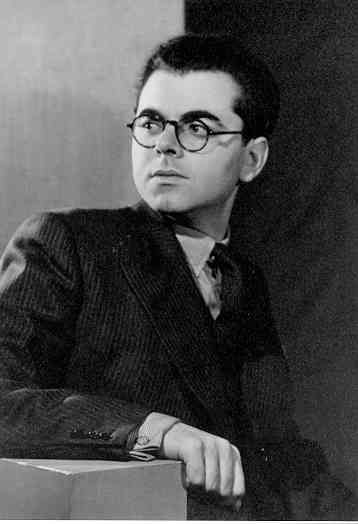
Biography
William Lloyd Webber was born into a poor London family in 1914. The son of a self-employed plumber, he was fortunate, from a musical point of view, that his father was a keen organ ‘buff’ who spent what little spare money he had travelling to hear various organs in and around the capital. Often he would take his son with him, and before long, young William started to play the organ himself and developed an interest that bordered on the obsessional.
By the age of 14, William Lloyd Webber had already become a well-known organ recitalist, giving frequent performances at many important churches and cathedrals throughout Great Britain. He won an organ scholarship to Mercer’s School, later winning a further scholarship to study at the Royal College of Music, where he studied composition with Ralph Vaughan Williams and gained his FRCO diploma at nineteen.
Parallel to his activities as an organist, he began to compose, and several interesting works date from this early period including the Fantasy Trio of 1936. Although the second world war interrupted his composition (he was organist and choirmaster at London’s All Saints, Margaret Street throughout the war), its ending marked the beginning of Lloyd Webber’s most prolific years as a composer. During the war he had married Jean Hermione Johnstone, a violinist and pianist. They had two sons: Andrew (b.1948) and Julian (b.1951).
From 1945 to the mid-1950s William Lloyd Webber wrote music in many different forms: vocal and instrumental, choral and organ, chamber and orchestral. Works from this period include the oratorio ‘St. Francis of Assisi’, the orchestral tone poem ‘Aurora’, the Sonatinas for viola and piano and flute and piano, and numerous songs, organ pieces and choral works. But Lloyd Webber’s roots were firmly embedded in the romanticism of such composers as Rachmaninov, Sibelius and Franck, and he became increasingly convinced that his own music was ‘out of step’ with the prevailing climate of the time. Rather than compromise his style, he turned to the academic side of British musical life – teaching at the Royal College of Music and, in 1964, accepting the Directorship of the London College of Music. Disillusioned with composition, he wrote virtually nothing for the next 20 years – until shortly before his death, when a sudden flowering of creativity produced among a number of works the mass ‘Missa Sanctae Mariae Magdalenae’ (available on ASV CD, DCA 961).
William Lloyd Webber was by nature a shy and withdrawn character. He had an avowed dislike of self-promotion and, rightly or wrongly, found the ‘cut and thrust’ approach apparently necessary for the furtherance of a composer’s career a complete anathema to him. He had no time for the trappings of verbosity. He was a man who wasted few words and, in his music, equally few notes. “Why”, he would ask his pupils, “write six pages when six bars will do?”
The possessor of a remarkable melodic gift which he frequently allied with surprisingly ‘purple’ harmonies, Lloyd Webber was a composer who knew exactly what he wanted to say and how to say it. When ‘Aurora’ was recorded for Philips in 1986 by Lorin Maazel and the London Philharmonic Orchestra, it was a revelation. Edward Greenfield of The Guardian called it “skilfully and sumptuously scored … music as sensuous as any you will find from a British composer”. Yet his music has remained virtually undiscovered until recently when works that have lain unpublished and unperformed for many years have gradually come to light.
